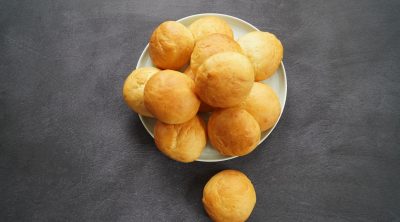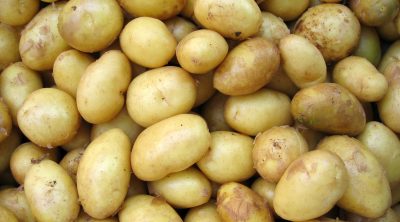Whether you’ve overcooked your pasta or forgot to rinse your grains before cooking them, cooking disasters can happen before even realizing it. While these are common mistakes that a lot of cooks can make, there are some that are a bit more confusing to understand.
For instance, say that you’re making chicken alfredo and thickened the sauce with milk. You decide to add a squeeze of lemon juice, and your sauce starts to look chunky and runny. This could be because the milk in your sauce is curdling, but why would this be the case?
Let’s look further into why milk can curdle, and also how to prevent situations like these from happening in the first place.
Contents
How to Prevent Milk from Curdling
Milk curdling can happen in numerous situations, whether you’re enjoying a hot cup of coffee in the morning or trying to make macaroni and cheese for dinner. Knowing what to avoid so your milk doesn’t curdle is important to not deal with eating chunky mac and cheese for dinner.
To start, don’t boil or heat your milk over a high flame. Boiling milk happens to be one of the main reasons why your milk may be curdling. In order to prevent curdling when cooking milk, use a medium or low flame.
When trying to make any sort of sauces that require milk, using either cornstarch or flour to stabilize the milk. Starch is known to be a good option when preventing milk curdling due to how it changes the compositions of the liquid. It’s also important to avoid using acidic ingredients when handling milk.
All hope is not lost however! If you’re using a starch to stabilize the milk, adding acidic ingredients will not cause the milk to curdle. Spices are also a good way to stabilize the milk and prepare it for more acidic ingredients. However, salt in particular can also cause milk to curdle.
Since salt is important in a plethora of recipes, it seems like the curdling of your milk is bound to happen.
However, in the case of ensuring that your milk doesn’t curdle while cooking, it would be best to add salt to the dish after the milk and other ingredients are finished cooking. This will not only make sure that the milk doesn’t curdle, but it’s also a good habit to practice.
If all else fails, you could replace the milk from your recipe entirely and use a cream instead. Since heavy cream or whipping cream have high amounts of fat, they’re less prone to curdling.
Aside from this, cream contains more flavor and has a thicker consistency than milk, so switching to a cream could be a better and simpler option when cooking your next meal.
Why could my milk curdle?
It’s important to know just exactly milk can curdle in the first place, in order to understand why situations such as milk curdling in your coffee can happen without a second thought.
To start off, milk consists of butterfat, water, and other proteins. The proteins’ molecules are what give milk it’s white color that we see. These same proteins move pretty independently of each other when there’s no change to its properties.
If the pH were to change, however, these molecules will coagulate or start to clump together. For example, adding lemon juice could affect the pH of the milk and then result in the curdling of milk.
This process is actually how cheese is made, but if this is not the desired effect you want, you know how to prevent milk from curdling before it gets to this point.
What about other types of milks?
In the case of using any milk that isn’t from a cow, you’d be in the realm of plant based milks. While there are milks that aren’t plant based, but also are from an animal, goat milk for example, there aren’t too many people that go this route when substituting cow’s milk for an alternative. All plant based milks are made from one central ingredient.
Examples of this would be almond milk, soy milk, oat milk, and the list continues. In almost every case, plant-based milk or otherwise, the same factors of acidity and temperature can cause your milk to curdle if the situation presents itself.
Depending on the situation you’re using the milk for, say coffee for instance, you have a few choices when it comes to preventing your plant based milk from curdling. You can choose to adjust the coffee’s level of pH or temperature, or affect the milk’s temperature to better balance with the coffee.
As far as your choice of plant-based milk, however, oat milk has a better resilience when it comes to curdling, and there are both plant-based and regular milk options that are barista-grade that are better than standard options when it comes to preventing curdling.
Can Milk Be Microwaved?
With great power comes great responsibility, and the same goes for your microwave. Typically, a microwave oven is used to cook and reheat food, but it can serve other purposes if handled properly.
You have the option of heating milk in the microwave, but the way milk is handled is a lot differently than normal types of food you would heat in the microwave. If milk is left unattended for too long, you could end up with curdled milk with a very unflattering taste.
This is why being extremely careful while microwaving milk is important to ensure you have a desirable result by the end of it. Another important tip is to make sure that whatever material that you’re cooking the milk in is microwave-safe.
Cook the milk on medium heat for 30-60 seconds, periodically stirring the milk every 15 seconds. This will ensure that the milk won’t scorched at the bottom. When steam starts to rise from the milk, this is a good indicator to take your milk out of the microwave.
However, since each microwave and type of milk is different, be sure to adjust this process as much as you need to.
What Happens When You Drink Curdled Milk?
One thing to make note of is that there are times when curdled milk is acceptable. For instance, in dairy products such as cheese or yogurt, curdling milk is one of the very first steps when trying to make either of these treats. But what happens when you see curdled milk in your coffee for example?
What matters most is whether that curdled milk is spoiled or not. Assuming that there’s no reason for the milk to curdle because of the coffee itself, then you may be dealing with spoiled milk instead.
Drinking spoiled milk can allow harmful pathogens into your body and result in food poisoning. To prevent from ingesting spoiled milk, if your milk has somehow curdled, be sure to give it a smell. Spoiled milk will give off a sour odor which can alert you if something is fishy.
If you’re still not sure if your milk is spoiled, look in the milk container itself. If the milk inside the carton or container is curdled, then it’s more than likely spoiled.
Instead of dealing with the headache of being sick from curdled milk, be sure to discard any food or drink that was made with the milk. Even if you’re unsure, it’s better safe than sorry.
Why Does My Milk Go Bad Early?
There can be a few reasons why your milk goes bad earlier than the expiration date. The first thing to take a look at is your fridge. In most cases when milk goes bad early, it could be that your fridge isn’t at the correct temperature for milk to be stored at.
According to the USDA, the refrigerator’s temperature should be below 40 degrees Fahrenheit to prevent bacteria growth on refrigerated food and drinks. Particularly, it’s best to store milk between 35 to 40 degrees Fahrenheit to prevent the beverage from growing harmful bacteria and causing food poisoning.
Where you keep your milk in the fridge could also be a reason why your milk is spoiling sooner. Depending on the model of your fridge, not every shelf will be cooled in the same way. There are a few ways to work around this predicament though.
To start, since hot air rises, putting your milk on the bottom shelf could ensure that it’s chilled safely. However, if your fridge model has a freezer above it, then consider putting your milk on the top shelf. It’s important to avoid putting your milk on the door of the fridge since the door is far from the coldest region in the fridge.
The most annoying and trivial practice that causes food and drinks to go bad is leaving it out of the fridge for too long.
But how long is too long? If at all possible, return your milk as soon as possible to your fridge so it won’t go bad. If this isn’t possible, however, milk can last at least two hours outside of the fridge before it can go bad.
This estimate can change depending on things like how warm or cold it is outside, so it’s best to make it less than an hour that the milk is out to ensure the milk doesn’t end up spoiling.







Leave a Reply